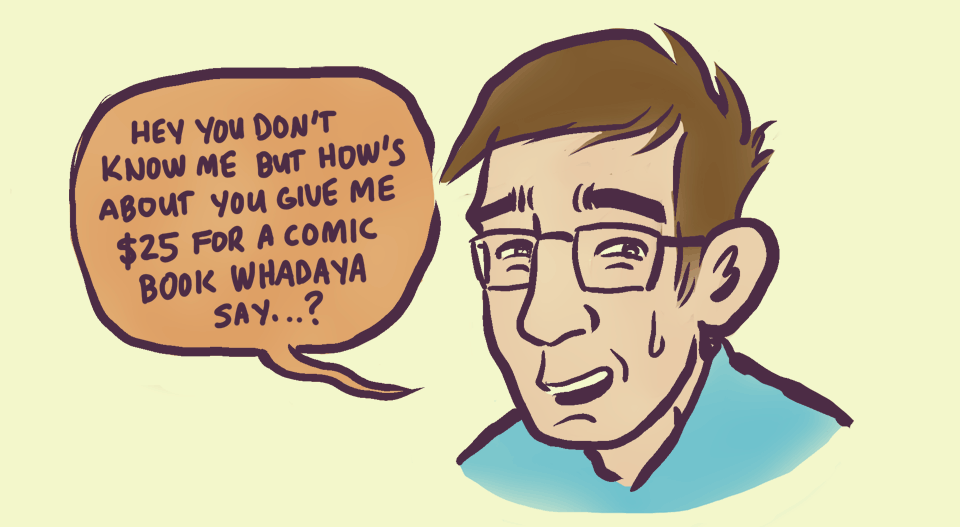 Pictured: a face you can trust
Pictured: a face you can trust
According to this New York Times article, the average American knows 600 people.
Let’s say for the purpose of argument that the New York Times figure is accurate, and that my social network is “average”. Let’s also say that 10% of those 600 people buy my books. (I’m guessing that’s a pretty optimistic estimate if anything, but again, just for the purpose of argument.)
So that’s 60 sales I would make from people that I know personally.
Needless to say, I have to sell a lot more books than that to make publishing them economically viable. That means the majority of my sales need to come from complete and total strangers who have no emotional investment in me or my personal success or failure.
I guess that’s obvious if you think about it, but I find it’s helpful to keep in mind when I’m thinking about the best way to promote my work.
Take these two facts which I might use for promotional purposes:
1) I was covered in the Wall Street Journal.
2) My graphic novel Tonoharu has been translated into French and Spanish.
If I’m talking to my mom, or a friend, or even an acquaintance, those two facts by themselves would probably be of (at least mild) interest.
But if it’s someone that’s never met me, this “news” suddenly becomes a lot less interesting:
1) [A complete stranger] was covered in the Wall Street Journal.
2) [Some book you’ve never heard of] has been translated into French and Spanish.
Like, who cares? Lots of people you don’t know are covered in the WSJ. Lots of books you’ve never heard of are translated into other languages. If you don’t have any connection to me, these facts (by themselves) are unlikely to be of any interest.
If my promotional materials read like a family newsletter detailing my middling achievements, it’s unlikely to interest anyone who doesn’t know me personally. And since my potential audience is mostly comprised of strangers, it’s important to find creative ways to capture their attention. Every promotional effort needs some kind of hook.
Which brings me to the YouTube book trailer I’m working on to coincide with Tonoharu: Part Three’s release this November.
Now, I could title the video Official Book Trailer for Tonoharu: Part Three and show a montage of artwork over a royalty-free soundtrack. That would be a perfectly acceptable route… but also a route that would be unlikely to get many views outside of friends and family.
Because again, if I put myself in the shoes of someone who doesn’t know or care about me or my work, that video may as well be called: Official Book Trailer for [some book you’ve never heard of]. Probably not something they click on (or even see a link for in the first place for that matter).
So instead, I’ve decided to take a completely different approach. So different that it’s not really even a book trailer anymore (at least not in the traditional sense).
The video is centered around why Tonoharu took so absurdly long to complete, and the lessons I learned that I intend to apply to future artistic projects. I’ll probably call it something click-bait-y like:
4 Time Management Tips (from someone who spent 13 years on a graphic novel).
I dunno, maybe it still won’t get many views, but I figure it’s a lot more intriguing than generic book trailer #8736472. It’s been a lot more fun to work on, in any event. Anyway, I’m about 25% done with it, and will link to it once it’s done.
Okay, I’ve been rambling on about marketing for long enough. See you next Monday!
